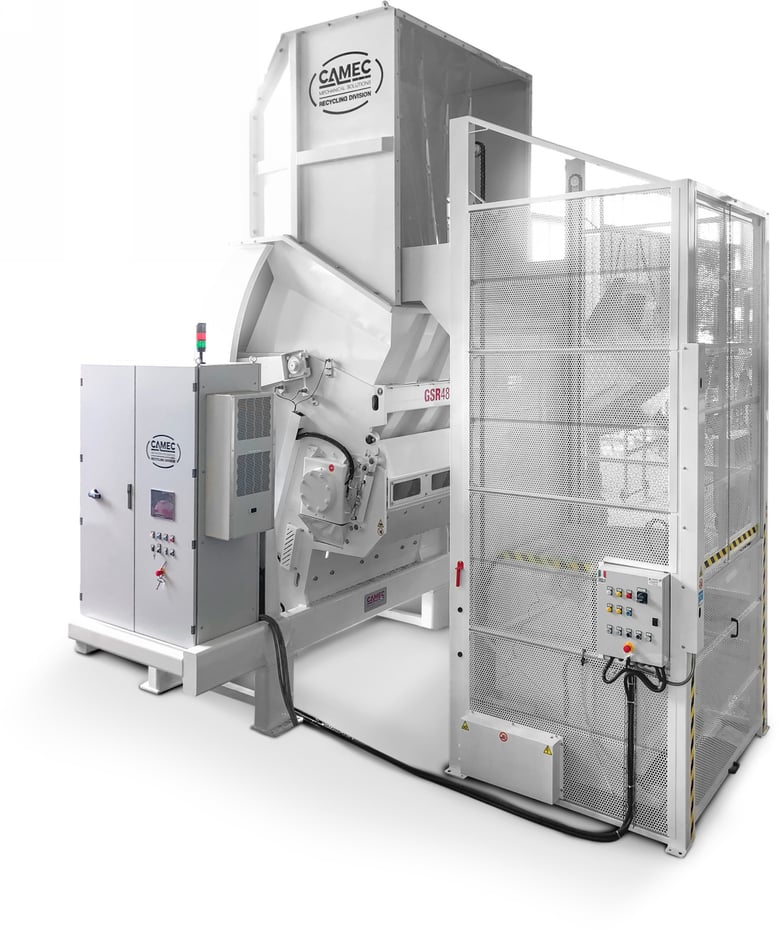The “family” of plastics can be divided into three major subgroups, which can be distinguished by different physical characteristics, behaviours and uses in the industrial field.
The first group is that of thermoplastics, polymers that soften with heat and consequently become malleable until they cool down and return to acquire rigidity. These materials can be heated, molded and solidified multiple times, unlike thermosetting plastics which, once molded and solidified, cannot be melted a second time. Next to these two large groups of materials there are elastomers, or rubbers, which are characterized by their elasticity and the ability to deform and return to their original shape afterwards.
To recycle these different types of plastics, different machineries and technologies are required, imposed by the different chemical and physical characteristics of the polymers to be treated.
What are the thermosetting plastics and in what areas they are used
Thermosetting plastics, as we have seen, are characterized by a particular property: due to their molecular structure, when heated they become soft at first (and therefore easily workable), and subsequently harden thanks to a three-dimensional cross-linking process. This means that, by heating the thermosetting plastics and molding them using pressure, it is possible to create objects of all kinds which, once cooled, will be particularly rigid, thanks to the creation of resistant bonds between the polymers that compose them.
Another characteristic of thermosetting plastics is their tendency to decompose and carbonize if they are heated a second time. The three-dimensional lattice that forms during the cooling phase, in fact, is so rigid that a second exposure to heat does not lead to the melting of the plastic, but to its definitive degradation.
Thanks to these characteristics – rigidity, resistance to melting, insolubility – thermosetting plastics are widely used as molding materials, as insulating materials and in the paint sector. They can be used:
- as foams for the production of upholstery for furniture or the automotive sector
- for the production of thermal insulation panels
- for the production of panels for thermal and acoustic insulation
- in the nautical sector (construction of small boats, canoes …)
- in the building sector (roof coverings)
- to produce glues and paints
- to produce Formica accessories
How to recycle thermosetting plastics
The particular features of thermosetting plastics make all objects made with this type of polymers particularly difficult to recycle, because the bonds that are created during the plastic solidification and relevant cross-links are final and cannot be dissolved. This does not mean, however, that objects in thermosetting plastic – and the high-density processing waste (sprues) that are created during their production – cannot in any case be sent for recycling and recovered.
Since thermosetting plastics, once molded, cannot be melted a second time, their recovery can only go through shredding, carried out using special rotors capable of reducing the plastic into uniform sized fragments.
Industrial sprues, for example, even if large in size, can be effectively treated with the upgraded CAMEC GS650 and GL620 single-rotors – with respectively electric and hydraulic motorization – which allow to obtain material with homogeneous size and ready for subsequent treatments and guarantee high productivity. and great reliability. The small sprues, on the other hand, can also be treated with the compact single-rotors GR280 and GRR280, with electric motorization, which, being smaller in size, are able to guarantee excellent performance with limited energy consumption.
Furthermore, thermosetting plastics can be treated with special granulators, specifically designed for grinding and reducing heterogeneous plastic material waste. These machines – like the granulators of the MG line by CAMEC – are available in various sizes (MG300, MG400) and allow to drastically reduce the size of the material to be treated, maintaining a limited energy consumption and allowing to obtain, at the end of the processing, granulated plastic that can be used as an inert filler in the processing of virgin polymers or as a filler for new products.

